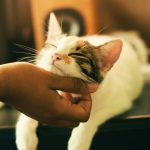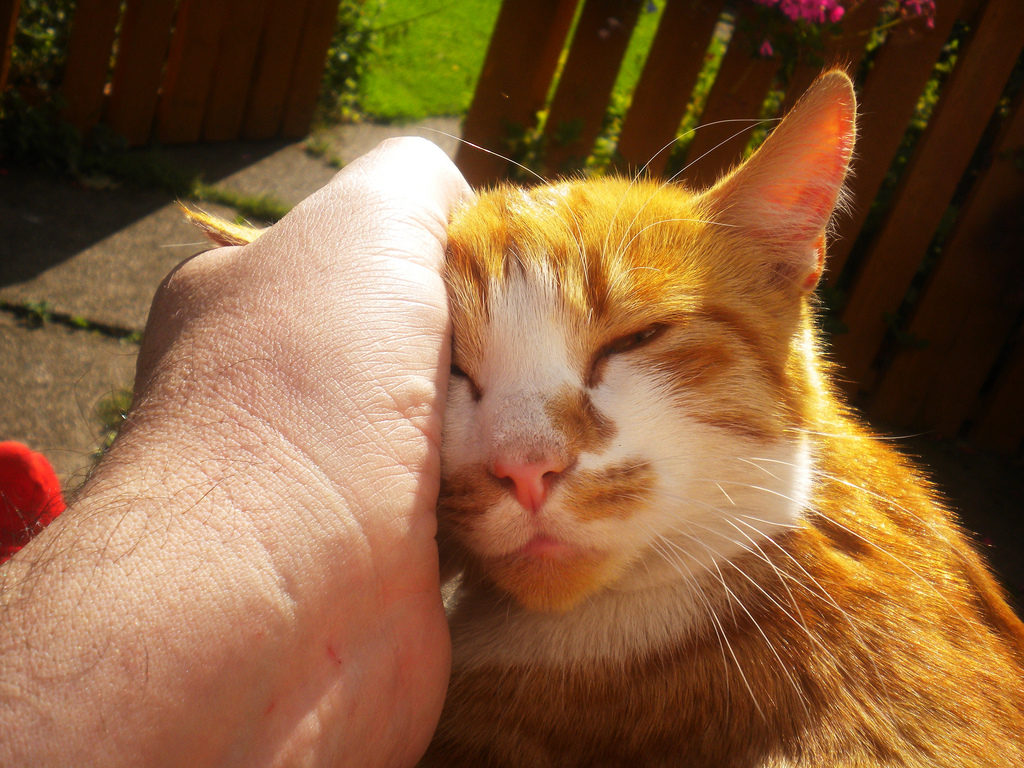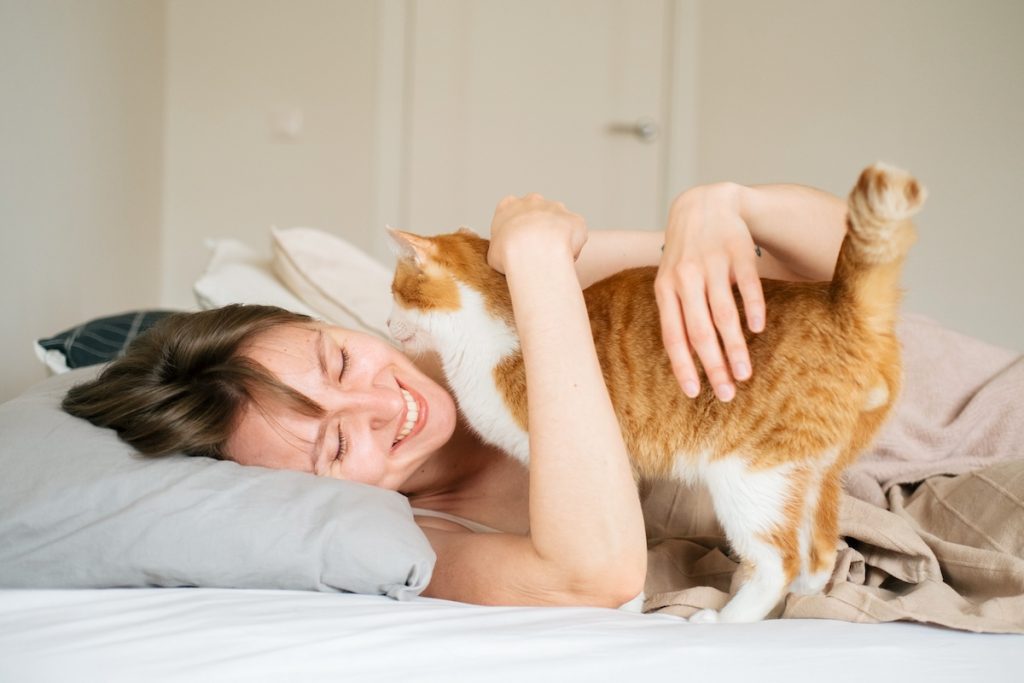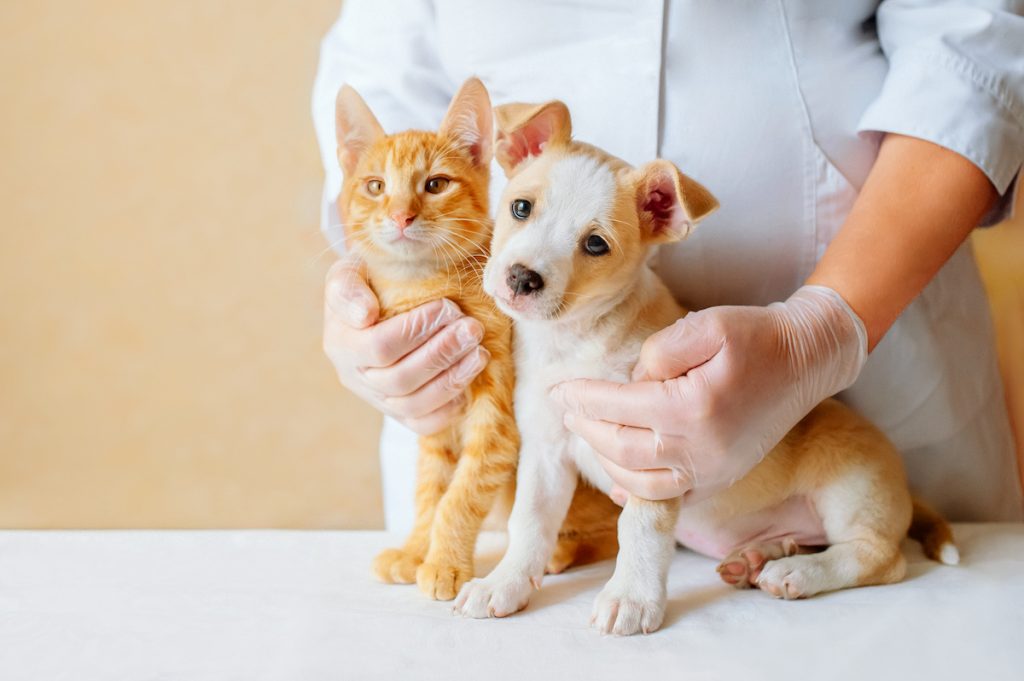scoping out the purrfect pair?


In the last two decades, the number of autism diagnoses in the UK has cat-apulted by 787% (Russell et al., 2022). So, what exactly is autistic spectrum disorder (ASD) and what’s causing this exponential growth?
Defining ASD in a single sentence is near impossible due to its sheer complexity. Even the NHS website does not provide a definition, and instead states that “autistic people may act in a different way to other people” (NHS, 2022) – the language used here is rather marginalising as it’s assuming that “other people” are neurotypical and, therefore, ‘the norm’. The steep rise in diagnoses can perhaps be attributed to an improved understanding of ASD and its different presentations across gender and age.
ASD is commonly associated with communication difficulties, and interpreting facial expressions can be particularly challenging for autistic people. However, research reveals that the type of stimuli presenting the expression could make all the difference: autistic brains responded better to facial expressions in animal-like faces over human ones (Atherton & Gross, 2018; Whyte et al., 2016). Considering this, it makes sense that autistic people may sometimes prefer interactions with animals over humans. Many personal narratives have documented an exceptional bond between cats and autistic children (Carter-Johnson, 2016; Cats Protection, 2019), however, the academic research appears to be sparse. Consequently, Cleary and colleagues (2023) undertook a scoping review to consolidate the literature in this area, seeking to understand how cats can play a therapeutic role for autistic people.

Lived experience stories have demonstrated the benefits autistic people receive from engaging with animals, but research is still limited.
Methods
This paper followed a previously established framework for scoping reviews, which was advanced by Levac and colleagues (2010). A search was conducted across several electronic databases according to the following criteria:
- Research focus was fully or partially on cats specifically;
- Target population identified as autistic or on the autism spectrum;
- English language, peer-reviewed primary research with no parameters set for the publication date.
Thematic analysis was conducted using Braun and Clarke’s guide (2006). The articles were thoroughly read by one author, and then re-read using analysis software. The papers were coded, which helped the authors to identify themes and subthemes. The final themes were discussed with the lead author to reach mutual agreement.
As with most scoping reviews, no risk of bias assessment was used so it is difficult to ascertain the quality of included studies.
Results
The authors found 463 records in total, but only 13 articles were included after reviewing for inclusion criteria and eligibility. Two main ways that cats provide support for autistic people were found to be:
- In therapeutic interventions, such as play therapy.
- As a companion animal (which was the case for most people).
No studies were found to investigate the role of cats as service animals.
Cat-assisted therapeutic interventions
- Only two studies investigated this, both used robot cats that imitated real cat behaviours – these were chosen for their “therapeutic expressions known to better engage autistic people”
- Both studies yielded positive results, with improved levels of interaction by the autistic child with the robot cat, including raised levels of eye contact, verbalisation and initiation of physical contact with the robot.
Cats as companion animals
- Families with an autistic person were more likely to own a cat than neurotypical families.
Five main themes arose from the thematic analysis:
1. Behaviour and characteristics of cats
- Positive traits that autistic individuals favoured were: cats allowing themselves to be carried, being affectionate and lacking aggression
- Cats appeared to be more lenient towards autistic people, and showed preference for them over neurotypical individuals
- Prior to adoption, cats should be individually assessed to match their temperament with the future home environment, facilitating better chances of lasting success.
2. The human-cat bond
- Autistic individuals formed a “strong mutual bond” with their cat
- During the pandemic, this relationship deepened since cats were a source of consistency and calm.
3. Cats as substitutes for human interactions
- Autistic people used companion cats as human substitutes, forming deep friendship-like relationships
- Cats act as a buffer, enabling autistic people to improve their socialisation skills in a way that feels safe and secure.
4. Positive effects of cat ownership
- Sense of responsibility, and increased incentive to be more active
- Improved social interaction and communication
- Decrease in depressive symptoms, stress and anxiety
- A soothing influence and better emotional regulation gained through the sensory advantages of human-cat interactions (e.g. soft fur, purring sound).
5. Negatives, drawbacks and considerations of cat ownership
- Expensive care
- Time commitment required
- Inappropriate toileting issues
- Cat’s separation anxiety from the autistic individual
- Aggression originating from the cat, and aimed towards the cat.

Autistic people can create a strong bond with their cat, especially under stressful circumstances such as the pandemic.
Conclusions
This scoping review suggests that cats have a unique shared connection with autistic individuals, and this bond gives way to a plethora of benefits, including:
Increased skills in socialisation, communication, and self-regulation and reductions in anxiety, stress and social disconnection.
This scoping review suggests that cats can substitute human interactions for autistic people with their profound ability to provide companionship, comfort and sensory gratification. Additionally, cats have their own individual personalities, and so prospective matching should be carried out with the new environment to maximise compatibility and long-term success.
Robot cats have also achieved great success as therapeutic aids, and further research is indicated in this field.

This review found multifaceted gains of cat ownership for autistic people, such as increased socialisation skills and sense of companionship.
Strengths and limitations
This paper is the first scoping review to examine the relationship between cats and autistic people. The lack of literature shows that this was the most appropriate methodology, as it is still an emerging field and not enough data is available for a more comprehensive (systematic) review. The authors successfully identified themes and consistently related these back to the review aim. The results section clearly demonstrated how the themes emerged from the studies. The authors acknowledged the additional finding of “negatives, drawbacks and considerations of cat ownership” that was found across many of the studies. Although this theme does not align with their original objective (to build a knowledge base endorsing feline therapy), by acknowledging and including this incidental finding, their research is much more authentic, credible and transparent.
From the start, the review aim is intentionally selective towards the positive influence of cats over the drawbacks. This introduces the possibility of a biased search strategy, so consideration and justification for this is necessary. Furthermore, there was a large variation in the types of studies included, making comparisons difficult. Only English-language articles were included, limiting the generalisability of this review. Due to the niche nature of research, even a few non-English papers may have greatly altered the themes identified. Non-academic sources of information were also overlooked; additional online searches would have highlighted vital information that will be discussed in the next section.
Although it is stated that Levac’s (2010) advanced framework for a scoping review was followed, the authors did not include the final stage “Consultation”. Levac indicated that consultation with stakeholders is a “required component”, and I would argue that by leaving out this step, the authors have missed out on a great opportunity to gain insight into how cats support autistic people in the real world. Examples of stakeholders are: autistic individuals, their families, healthcare professionals and organisations such as Pets as Therapy (where cats already volunteer as therapy animals).

Consolidation with stakeholders is vital to co-producing more effective and focused research.
Implications for practice
This paper has provided many new research directions:
- The role of robot cats in therapeutic interventions for autistic children. Although the authors portray robot cats as a substitute for real cats, it is clear that they are also impactful as a separate intervention in and of itself. Robot cats have distinct benefits such as demonstrating cause and effect in a consistent, visual, and sensory-stimulating way that may not be achievable with live animals.
- The potential for real cats to be used as assistance animals or in therapeutic interventions.
Although the authors debate whether there is an absence of cats in assistance roles or just a lack of research in this area, I strongly argue for the latter. After a Google search, it became apparent to me that there are already numerous cases where cats are acting in a therapeutic capacity, but wider recognition for their role is substantially lacking (BBC, 2019). An individual case in May 2022 highlights how there is even societal resistance towards recognising cats as assistance animals. Mr Ian Fenn was asked to leave his cat, Chloe, outside when shopping at a supermarket in London, despite explaining that she is a service animal (Cascian, 2022). The supermarket has since maintained that any assistance animals, other than dogs, are not allowed in their stores, claiming a risk to food hygiene (Fenn, 2022). However, the lack of evidence to support how the hygiene of cats differs from that of dogs is exactly why more research needs to be done, so that those who rely on non-dog service animals are not disproportionately discriminated against in their daily lives. Mr Fenn is autistic and describes how Chloe is invaluable in helping him to manage sensory overload and complete his weekly shop (Cascian, 2022).
For this reason, I strongly advocate for future research to be focused towards better understanding and acknowledging the positive impacts that cats (and other animals) can bring as assistance or therapy animals. This research can then empower individuals to champion and push for policy change – an area that requires much improvement in the UK. In some countries, such as Australia, the legislation is more accessible and other animals are also legally recognised and protected as assistance animals. Clearly, there is a lot of progress to be made in UK legislation, and building up an evidence base is the crucial first step to raising awareness of the therapeutic role of cats in society.

Further research can establish the impact of cats as service or assistance animals and contribute to policy changes.
Statements of interest
No conflicts.
Links
Primary Paper
Cleary M, West S, Thapa DK, Kornhaber R. Putting Cats on the Spectrum: A Scoping Review of the Role of Cats in Therapy and Companionship for Autistic Adults and Children. Issues in Mental Health Nursing. 2023;44(6):505-16.
Other references
Russell G, Stapley S, Newlove-Delgado T, Salmon A, White R, Warren F, et al. Time trends in autism diagnosis over 20 years: a UK population-based cohort study. Journal of Child Psychology and Psychiatry. 2022;63(6):674-82.
NHS. What is autism? [Internet]. 2022. [cited 2023 Nov 25]. Available from: https://www.nhs.uk/conditions/autism/what-is-autism/.
Atherton G, Cross L. Seeing More Than Human: Autism and Anthropomorphic Theory of Mind. Front Psychol. 2018;9:528.
Whyte EM, Behrmann M, Minshew NJ, Garcia NV, Scherf KS. Animal, but not human, faces engage the distributed face network in adolescents with autism. Dev Sci. 2016;19(2):306-17.
Carter-Johnson A. How a cat enabled an autistic six-year-old to communicate. BBC. [Internet]. 2016 March 13 [cited 2023 Dec 2]. Available from: https://www.bbc.co.uk/news/av/health-35797084
Cats Protection. [Internet]. 2019 June 8 [cited 2023 Dec 2]. Available from: https://www.cats.org.uk/cats-blog/meet-cats-and-kids-who-are-furrever-friends
Cleary M, West S, Thapa DK, Kornhaber R. Putting Cats on the Spectrum: A Scoping Review of the Role of Cats in Therapy and Companionship for Autistic Adults and Children. Issues in Mental Health Nursing. 2023;44(6):505-16.
Arksey H, O’Malley L. Scoping studies: towards a methodological framework. International Journal of Social Research Methodology. 2005;8(1):19-32.
Levac D, Colquhoun H, O’Brien KK. Scoping studies: advancing the methodology. Implementation Science. 2010;5(1):69.
Braun V, Clarke V. Using thematic analysis in psychology. Qualitative Research in Psychology. 2006;3(2):77-101.
BBC London. Is this London’s cutest therapy cat?. 2019 Oct 20 [cited 2023 Dec 3]. Available from: https://www.youtube.com/watch?v=UTY6c4I2CTQ
Cascian D, Ellison C. Court fight looms over Sainsbury’s cat ban. BBC. [Internet]. 2022 May [cited 2023 Nov 25]. Available from: https://www.bbc.co.uk/news/uk-61596623
Fenn I. Fenn V Sainsburys. [Internet]. 2022 July 14 [cited 2023 Dec 2]. Available from: https://catfriendly.org/fenn-v-sainsburys/
Photo credits
Photo by Yerlin Matu on Unsplash





